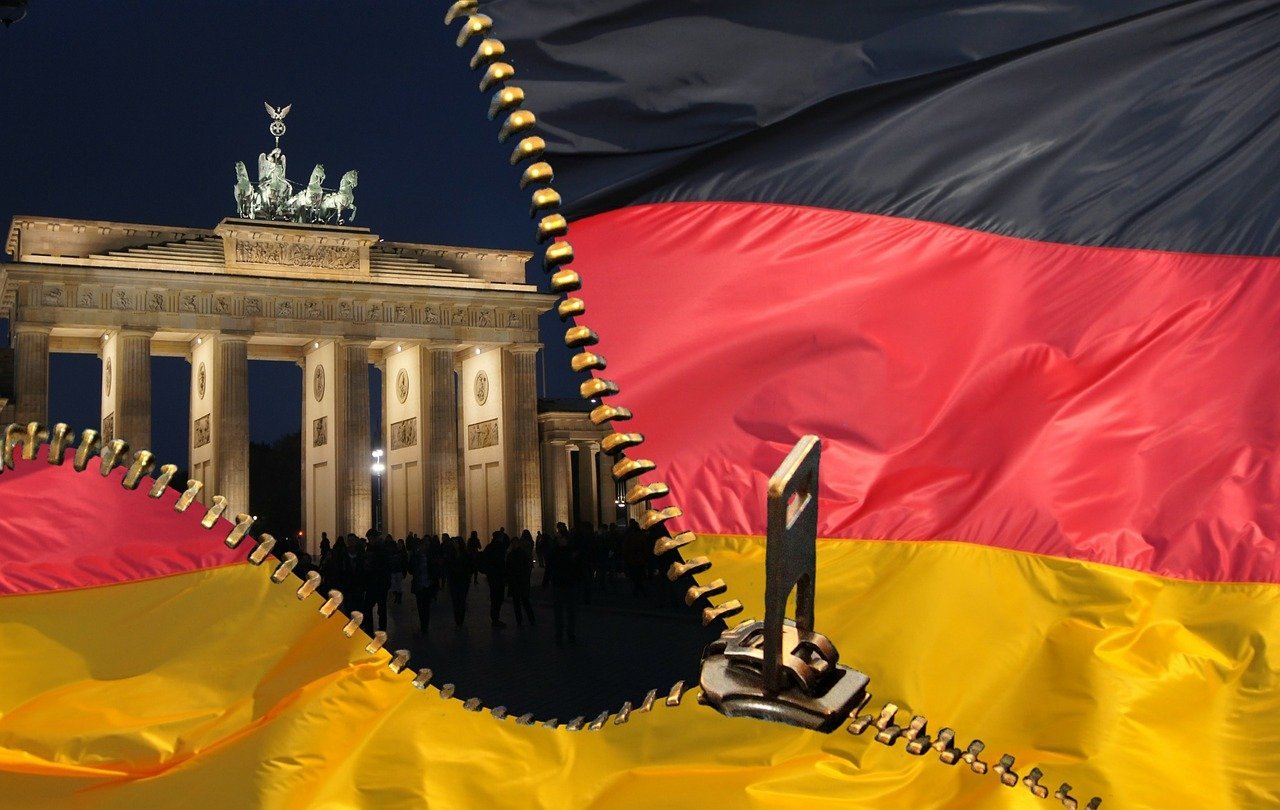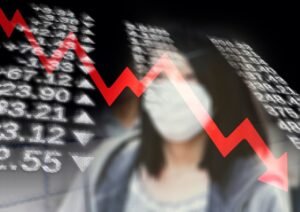The Evolution of the German Economy: A Historical Perspective Towards 2025
The German economy stands as one of the most robust and dynamic in Europe and globally. Renowned for its engineering prowess, manufacturing strength, and export-oriented growth model, Germany is frequently referred to as the “economic powerhouse” of the European Union. In terms of nominal GDP, Germany ranks among the top economies, showcasing a diverse landscape that includes significant contributions from sectors such as automobile manufacturing, machinery, chemicals, electronics, and renewable energies.
Historically, Germany’s economic journey has been marked by pivotal milestones that have shaped its current structure. The post-World War II era saw the implementation of the social market economy, which combined free-market capitalism with social policies aimed at ensuring economic stability and social welfare. This approach fostered extraordinary growth during the Wirtschaftswunder, or “economic miracle,” of the 1950s and 60s, which witnessed rapid industrial expansion and a dramatic rise in living standards.
Key economic indicators, such as unemployment rates, inflation levels, and export figures, serve as a barometer for the German economy’s health. As of recent reports, the unemployment rate remains low relative to other European nations, reflecting a workforce that is not only skilled but also adaptable to changing market demands. The index of industrial production and trade surplus exemplify Germany’s leadership in global exports, particularly in high-value manufacturing goods.
As we progress towards 2025, it is essential to understand both historical influences and contemporary challenges faced by the German economy. These include demographic shifts, the impact of digitalization, and the transition to a greener economy. Thus, exploring these factors enables a comprehensive perspective on how Germany is poised to navigate future economic landscapes.
Post-World War II Economic Recovery
Following the devastation of World War II, West Germany faced significant challenges in rebuilding its economy. The implementation of the Marshall Plan in 1948 marked a critical turning point, as it provided substantial financial aid from the United States to help revive the war-torn nation. This aid was pivotal in facilitating the reconstruction of infrastructure, stimulating industrial production, and enhancing the overall economic stability of West Germany. The influx of capital allowed for the modernization of industries, which laid the groundwork for what would soon be known as the economic miracle or Wirtschaftswunder.
During the 1950s and 1960s, West Germany experienced unprecedented economic growth, characterized by rapid industrialization. The government promoted a social market economy that balanced free-market capitalism with social policies aimed at ensuring equitable wealth distribution. This approach fostered an environment conducive to innovation and productivity, which attracted both domestic and foreign investments. An essential aspect of this recovery was the emphasis on labor reforms. These reforms not only improved working conditions but also empowered labor unions, forging strong cooperation between businesses and workers.
The German workforce proved resilient and adaptable, contributing significantly to the country’s economic resurgence. Skilled labor, combined with a strong education system, equipped workers with the necessary tools to thrive in a competitive market. Moreover, West Germany established robust international partnerships, particularly within Europe, that facilitated trade and integration into the global economy. The establishment of the European Economic Community (EEC) in 1957 further solidified these ties, promoting economic collaboration among member states.
This period of recovery laid the foundation for West Germany’s long-term economic success, transforming it into one of the world’s leading economies by the end of the twentieth century. The lessons learned from this remarkable post-war recovery continue to inform economic policies and strategies as Germany navigates future challenges towards 2025.
Reunification and Its Economic Impact
The reunification of Germany in 1990 represented a monumental shift not only in political equilibrium but also in economic structures. The integration of East and West Germany was marked by both challenges and opportunities, fundamentally reshaping the economic landscape of the nation. The collapse of the Berlin Wall served as a catalyst for unifying two distinct economies, each with its own strengths and weaknesses. West Germany, characterized by a robust economic model, contrasted sharply with the centrally planned economy of East Germany, which had struggled with inefficiencies and stagnation.
The process of integration required substantial investment from the West into the East, aimed at upgrading infrastructure, modernizing industries, and stimulating job creation. This investment, estimated at hundreds of billions of euros, included initiatives in transportation, technology, and social services. Many East German industries, which had failed to compete in a market-driven economy, needed comprehensive restructuring. This transformation resulted in a wave of privatizations, acquisitions, and closures that, while necessary for long-term viability, led to significant job losses and economic dislocation in the short term.
Despite these endeavors, economic disparities persist, evidencing the complexities of merging different economic systems. Regions in the former East Germany have continued to experience higher unemployment rates and lower gross domestic product (GDP) compared to their western counterparts, illustrating ongoing challenges in achieving true economic parity. Nonetheless, some areas have rebounded, establishing new sectors and businesses in response to the evolving economic landscape. In particular, initiatives in renewable energy and technology have emerged as focal points for development.
In summary, the reunification of Germany catalyzed profound structural changes and investment opportunities while exposing lasting economic disparities. The journey to achieving equitable economic conditions across Germany is ongoing, emphasizing the importance of continued focus on growth strategies and investment in underdeveloped regions. The reunification process remains a crucial chapter in understanding the evolution of the German economy up to 2025 and beyond.
Germany in the European Union: A Leading Force
Germany has long been recognized as a pivotal member within the European Union (EU), playing a significant role in the shaping of the bloc’s economic landscape. As the largest economy in Europe, Germany’s influence extends to fiscal policies, economic integration, and trade relations among member states. The country’s commitment to stability and growth is evident in its response to the euro crisis, which tested the resiliency of both the euro and the entire European project.
During the euro crisis that began in 2009, Germany adopted a strong stance aimed at ensuring financial stability across the eurozone. This included advocating for fiscal discipline among member states, as well as supporting measures such as the European Stability Mechanism, an initiative designed to provide financial assistance to countries facing severe economic difficulties. Through these actions, Germany emphasized the importance of sound economic policies and budgetary constraints for all EU nations, promoting a culture of fiscal responsibility and mutual accountability.
Moreover, Germany’s extensive economic policies have significantly influenced the recovery efforts of other EU countries. By offering support to nations such as Greece, Spain, and Portugal, Germany helped stabilize the affected economies, showcasing a level of solidarity that is essential for the cohesion of the eurozone. This support was not without conditions—Germany insisted on implementing structural reforms in recipient countries to enhance competitiveness and ensure sustainable growth.
The effects of Germany’s policies have rippled beyond immediate economic assistance; they have also impacted trade relations among EU members. As Germany is a major exporter, its economic efficiency and robust industrial sectors have helped maintain the strength of internal markets, fostering interconnectedness within the EU. Consequently, Germany’s position as a leading force in the European Union highlights its responsibility in promoting economic stability and paving the way for a more integrated and resilient EU framework.
The Manufacturing Sector: Strengths and Challenges
The German manufacturing sector has long been recognized as a cornerstone of the country’s economy, particularly noted for its engineering excellence and automotive innovations. Renowned globally for its precision engineering, Germany is home to iconic brands that exemplify quality, such as Mercedes-Benz, BMW, and Volkswagen. This manufacturing prowess contributes significantly to the GDP, with a substantial proportion of exports derived from these sectors. Germany’s strong emphasis on research and development has fostered a culture of innovation, ensuring that manufacturing remains relevant in an ever-evolving global landscape.
However, the industry faces a myriad of challenges, primarily driven by globalization. Emerging economies have rapidly developed their manufacturing capabilities, often at lower costs. This has led to increased competition for German manufacturers, who must now navigate a complex international market where price sensitivity is ever more pronounced. As wages rise and labor costs in Germany increase, manufacturers are compelled to find ways to maintain their competitive edge without compromising on quality.
Moreover, the shift towards digital transformation, often referred to as Industry 4.0, brings both opportunities and hurdles. Automation, data analytics, and the Internet of Things are reshaping traditional manufacturing processes, enabling enhanced productivity and efficiency. However, the transition to these digital technologies requires significant investments and a skilled workforce to manage and operate new systems. The challenge lies in balancing investment in automation while retaining a human element that is critical in many manufacturing processes.
In addition, the growing emphasis on sustainability is prompting manufacturers to rethink production methods and supply chain practices. The pressure to minimize carbon footprints and adopt eco-friendly materials has introduced complexity into established processes. As the industry pivots towards sustainable practices, companies must innovate to ensure they meet both regulatory standards and consumer expectations. Navigating these multi-faceted challenges while leveraging the sector’s inherent strengths is crucial for the German manufacturing industry as it adapts to the future.
The Rise of Technology and Innovation
The German economy has undergone a significant transformation over the past few decades, increasingly prioritizing technology and innovation as vital drivers of growth. This pivot has been influenced by various factors, including global competition, changing consumer demands, and the rapid advancement of digital capabilities. As a result, the emergence of a robust startup ecosystem has become a hallmark of Germany’s commitment to fostering innovation. Cities such as Berlin and Munich have developed into thriving tech hubs, attracting entrepreneurs and investors from around the world.
Government initiatives have also played a crucial role in promoting technological advancement. Significant investments in research and development, particularly through programs such as the High-Tech Strategy 2025, exemplify the state’s dedication to boosting innovation. This strategy aims to create a more versatile economic landscape by encouraging collaboration between private industry and research institutions. By supporting projects in areas such as artificial intelligence, clean energy, and biotechnology, Germany is positioning itself as a leader in knowledge-based industries.
Despite the compelling shift towards technology, a delicate balance must be maintained between embracing digitalization and preserving the country’s renowned manufacturing strength. The traditional manufacturing sector has long been a cornerstone of the German economy, with industries like automotive, machinery, and chemicals dominating global markets. Instead of sacrificing this legacy, Germany is exploring ways to integrate technology into these sectors, often referred to as Industry 4.0, which involves the digitization of manufacturing processes. This evolution seeks to enhance productivity and efficiency while ensuring that German products maintain their competitive edge in an increasingly automated market.
Ultimately, the rise of technology and innovation in the German economy reflects a broader trend of adaptation to the demands of the modern market. Companies that effectively integrate technological advancements into their operations stand to benefit significantly, ensuring sustainable growth and resilience in the face of future challenges.
Social Policies and Economic Resilience
The German economy has demonstrated a remarkable ability to withstand various global challenges, largely attributed to its robust social policies. Central to this resilience are labor laws that prioritize worker rights, comprehensive welfare benefits, and a strong focus on education systems which together foster a competitive workforce. Labor laws in Germany encompass protections such as minimum wage regulations, employee rights to representation, and stringent rules against unfair dismissal. These measures not only secure job protection for individuals but also contribute to overall economic stability by ensuring a steady income for citizens, which in turn stimulates domestic consumption.
Moreover, Germany’s welfare state plays a pivotal role in supporting individuals during periods of economic transition or personal hardship. The comprehensive social security system covers unemployment benefits, healthcare, education, and pensions, which collectively underpin a safety net that promotes social stability. This approach allows citizens to navigate market fluctuations with confidence, knowing they have access to essential resources. Simultaneously, it cultivates a sense of social cohesion, crucial for maintaining public support for necessary economic reforms.
A significant aspect of Germany’s adaptability lies in its education system, which is aligned with the needs of the labor market. Vocational training and apprenticeships are emphasized, allowing young people to acquire skills that are directly applicable in various industries. This dual education system not only equips the workforce with essential skills but also helps to mitigate labor shortages that arise amidst demographic shifts and increasing demands in certain sectors.
Current debates surrounding immigration policies further underscore the dynamic nature of Germany’s social landscape. As labor shortages become more pronounced, discussions about attracting skilled immigrants have intensified. By ensuring that social policies are inclusive and supportive, Germany can enhance its economic resilience while responding effectively to evolving workforce needs. The interplay between social policies and economic health remains crucial as the nation approaches 2025 and beyond.
Environmental Policy and Sustainable Growth
Germany has long been at the forefront of environmental policy, emphasizing a commitment to sustainability as a cornerstone of its economic framework. Central to this endeavor is the Energiewende, or energy transition, which aims to phase out nuclear energy and promote renewable energy sources such as wind, solar, and biomass. This ambitious initiative is not just an environmental mandate; it is also a foundational element that shapes the country’s economic policy. By investing heavily in renewable energy infrastructure, Germany fosters innovation and creates jobs, demonstrating that environmental responsibility can align seamlessly with economic growth.
The German government has committed to targeting carbon neutrality by 2045, with significant steps planned for the years leading up to 2025. Policies incentivizing renewable energy adoption have led to a substantial increase in the share of renewables in the country’s energy mix. By 2022, approximately 45% of Germany’s electricity came from renewable sources, highlighting the success of these investments. Furthermore, government subsidies and programs supporting green technologies have catalyzed a vibrant market for eco-friendly products and solutions, making sustainability not only environmentally necessary but also economically viable.
The balancing act between fostering economic growth and ensuring ecological responsibility is complex. Critics argue that stringent environmental regulations could inhibit industrial competitiveness, particularly in manufacturing spheres. However, Germany’s approach emphasizes that sustainable practices can drive efficiency and innovation, ultimately leading to enhanced competitiveness in global markets, especially as international trade begins to increasingly favor environmentally conscious producers. The transition toward sustainability also opens opportunities for export-led growth in clean technologies. As other nations follow suit in strengthening environmental policies, Germany stands to benefit from its position as a leader in renewable energy and sustainable practices.
Looking Ahead: Projections for 2025
As we approach 2025, projections for the German economy reveal a multifaceted landscape influenced by several key factors, including demographic changes, technological advancements, and global economic trends. A central aspect of these projections is the aging population in Germany, which poses both challenges and opportunities. The demographic shift is likely to lead to a decline in the working-age population, creating potential labor shortages. However, this also opens avenues for increased automation and the adoption of artificial intelligence, which can enhance productivity and mitigate the effects of a shrinking workforce.
Technological advancements are set to play a pivotal role in shaping the trajectory of the German economy. Investments in digital infrastructure, renewable energy, and sustainable practices are expected to not only fortify Germany’s position as a leader in innovation but also support the transition toward a greener economy. The ongoing integration of Industry 4.0 concepts into manufacturing processes will further increase efficiency and competitiveness. As businesses adapt to these technological changes, there will be an enhanced need for skilled workers, thus emphasizing the importance of educational reforms and vocational training programs to equip the labor force for future demands.
Furthermore, the global economic landscape is continuously changing and presents various scenarios for Germany’s economic future. Trade relationships, particularly in the context of the European Union and beyond, will dictate market accessibility and influence economic growth. The potential for new markets, especially in Asia and Africa, may provide significant opportunities for German exports. However, the economy must also remain vigilant regarding external risks such as geopolitical tensions and supply chain disruptions that could threaten stability.
Overall, while the future of the German economy by 2025 presents uncertainties, proactive measures in workforce development, technological innovation, and strategic global engagement will be crucial for navigating the challenges and harnessing the opportunities that lie ahead.




